Inside Alejandro Iñárritu’s VR border drama at LACMA: What you will see and why you might cry
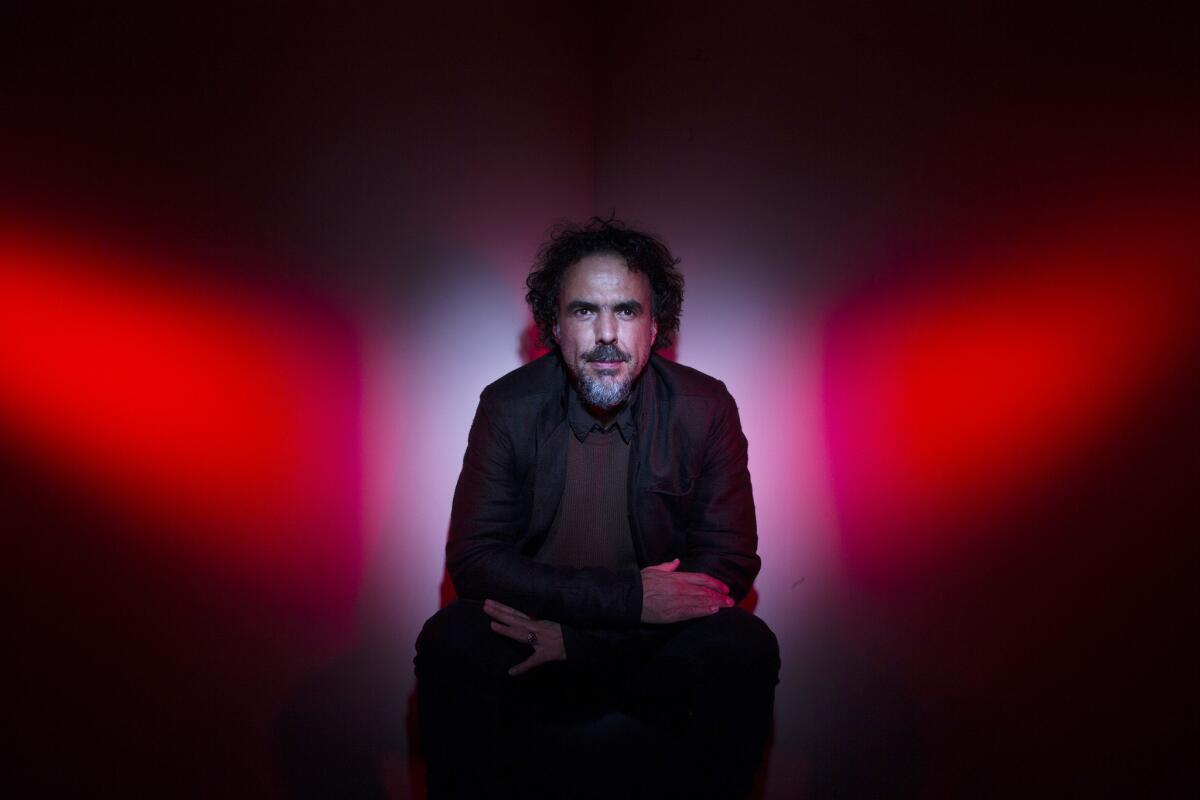
- Share via
The room is ice cold. The steel bench I sit on feels even colder. Scattered around the space are the shoes of migrants — a boot, a beaded sandal, a little girl’s Cinderella sneaker — abandoned in the Sonoran Desert during their owners’ perilous crossing from Mexico into the U.S.
I hug myself to ward off the chill. And I think of an aunt, from the Peruvian side of my family, who was arrested by Immigrations and Customs Enforcement after landing at LAX. On a previous visit to the United States, she had mistakenly overstayed a tourist visa by a couple of days. Upon re-entering the country, she found herself — in her mid-70s — handcuffed at immigration, placed in a van and taken to a detention center somewhere in the Los Angeles area.
Years later, when she would recount the experience, she often talked about the young Mexican woman who comforted her that day (my aunt was traveling by herself), and the chilliness of the cell, where she slept on the floor for a night. (She was promptly deported the next day.)
I start to bounce my legs to maintain some semblance of warmth. Suddenly, a light flashes, indicating that I can open the door and proceed to the next room.
This is “Carne y Arena,” an art and virtual reality installation by Mexican film director Alejandro G. Iñárritu that opens at the
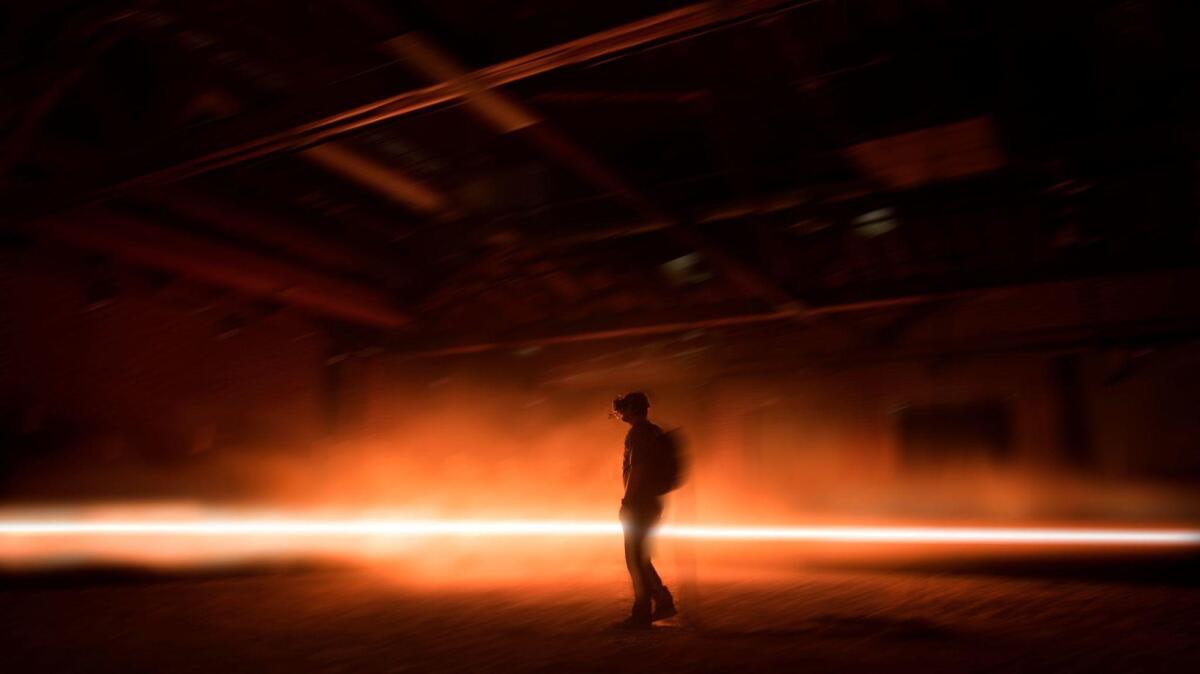
It is a visceral and astonishing work. It is also vital.
For one, it puts the viewer almost literally in the shoes — certainly, among the shoes — of the individuals who make this treacherous expedition in search of political and economic security. But more significantly, it helps rewrite the narrative we so often hear about immigration from Latin America, so often linked to criminality. (During the campaign, Donald Trump said Mexican immigrants were “rapists” and brought “drugs” and “crime” into the U.S.)
In the United States, a country whose identity is built on the story of a terrifying crossing — the voyage of
The installation begins with the shoe-strewn cell — intended to resemble the short-term holding cells used by the Border Patrol, some of which have been known to be kept at frigid temperatures, thereby earning the Spanish nickname hieleras (iceboxes).
From there, the visitor proceeds — alone and barefoot — into a large room covered in earth. One side is lined by a steel barricade once employed on the U.S.-Mexico border. Here, you don a set of virtual reality goggles for a nearly seven-minute experience that places you deep in the desert as a group of sunburned and weary migrants, all rendered digitally, stumble across. Among them: a small boy and a mother clutching an infant.
In...a country whose identity is built on the story of a terrifying crossing—the voyage of the Mayflower—Iñárritu...examines a similarly difficult journey.
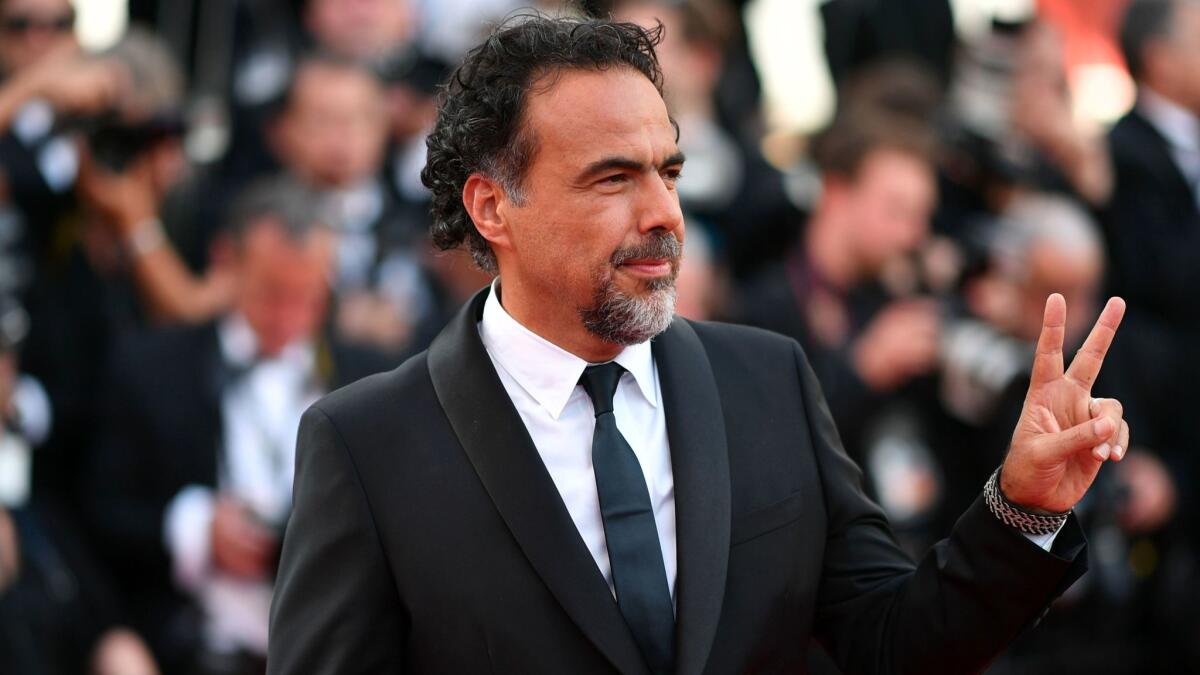
I will not reveal any further plot details because some of the work’s power lies in not knowing what happens next. But the setting has been extraordinarily considered. Winds whoosh through the gallery, leaving a chill. And as you wander this VR desert, you feel earth and pebbles dig into your toes. (The Border Patrol requires migrants to remove their shoes after arrest, hence the request that visitors to the installation do the same.)
After the VR piece, viewers exit into a narrow hallway where a row of video screens in the wall play short biographical sketches that feature the real immigrants whose stories inspired “Carne y Arena.”
If you are expecting something out of a local history center, think again.
For one, these stirring video portraits were shot by Academy Award-winning cinematographer Emmanuel Lubezki — who worked with Iñárritu on “Birdman” and “The Revenant.” Plus, each is embedded deep into the wall, at eye-level, requiring you to get up close and make eye contact with the person whose story is being recounted.
And each gripping tale is worth watching in its entirety.
There is the young mother who fled Central America after a gang member threatened to chop her child into pieces. The Border Patrol agent who watched life escape from the migrants who didn’t quite make it. The young man who made the crossing at age 9 and ultimately went on to receive a law degree at UCLA. And there is the excruciating anecdote about a young boy abandoned in the desert because he couldn’t keep up.
They are stories of people willing to risk their lives crossing vast oceans of sand to face uncertain futures — all in the hope of improving their lives and that of their children.
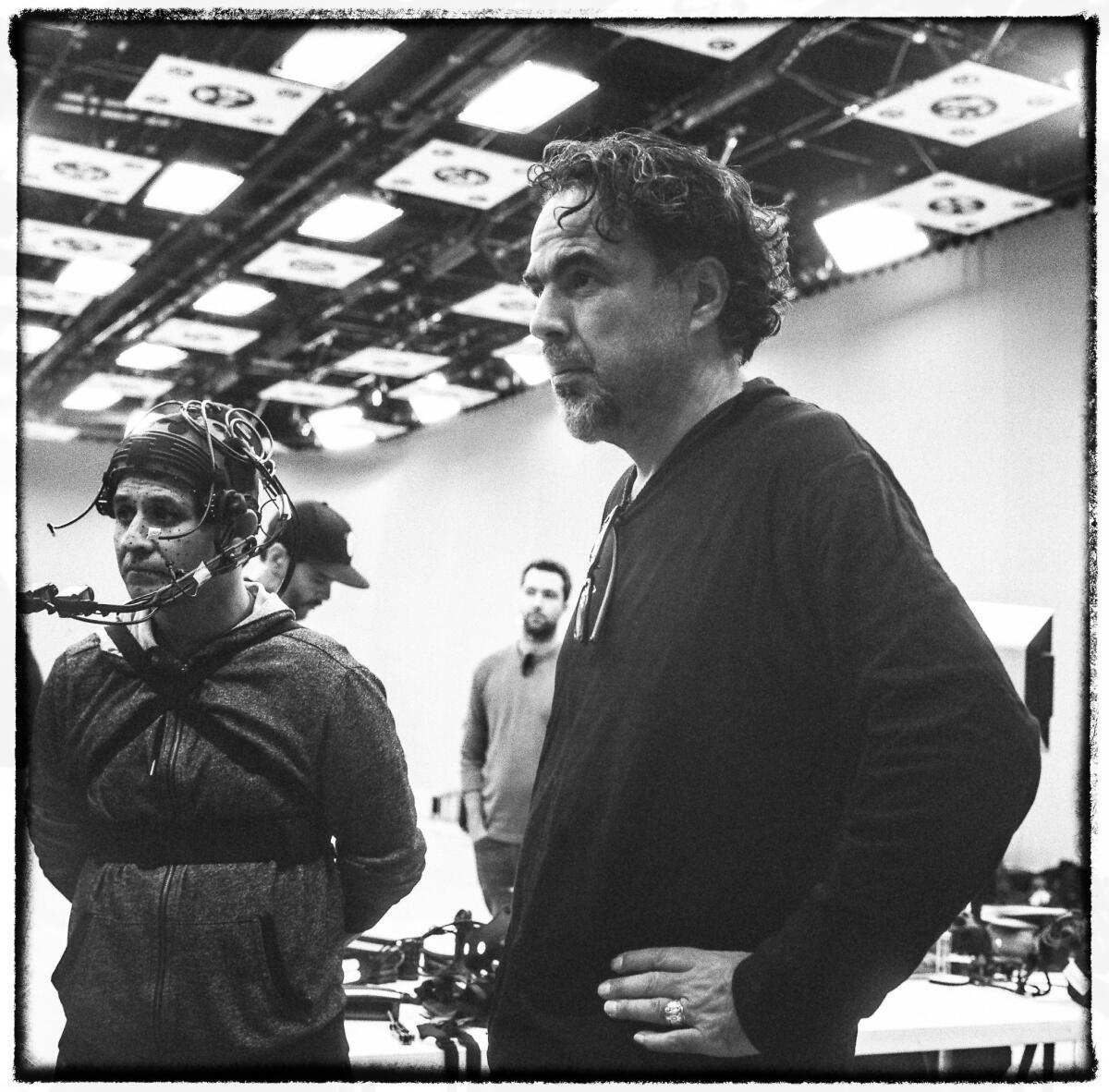
I left the installation in tears. I also left with the realization that these journeys are much like the Pilgrim stories lionized in every schoolkid’s textbook.
There is that bedrock of U.S. identity: the story of the roughly 100 British Protestant separatists jammed into the cargo hold of the merchant ship Mayflower in the 17th century, who endured two months of seasickness and Atlantic storms to establish their society at Plymouth Rock.
Or the thousands of 19th century European pioneers who made the arduous trek across the continent in wagon trains to settle states like California during Westward Expansion. They contended with turbulent river crossings, inclement weather, cholera outbreaks and Indian attacks — not to mention the grueling climb over the Sierra Nevada Mountains, described by one era migrant as “the most dreaded moment” in the journey.
Certainly, burned into the national consciousness is the tale of the Donner Party, trapped in the snow near modern-day Lake Tahoe, they reportedly resorted to cannibalism.
The power that the narrative of the crossing holds is observed by Joan Didion in “Where I Was From,” her memoir of California.
“Each arriving traveler,” she writes, “had been, by definition, reborn in the wilderness, a new creature in no way the same as the man or woman or even child who had left Independence or St. Joseph however many months before: the very decision to set forth on the journey had been a kind of death, involving the total abandonment of all previous life, mothers and fathers and brothers and sisters who would never again be seen, all sentiment banished, the most elementary comforts necessarily relinquished.”
To be American, to some degree, is to contend with the story of these crossings and the personal sacrifice and transformation they represent. (Not to mention aspects of those journeys, and others, that we as a society are less eager to face: the forced migrations of African slaves and Native Americans.)
The decision to set forth on the journey had been a kind of death, involving the total abandonment of all previous life...all sentiment banished.
— Joan Didion, "Where I Was From"
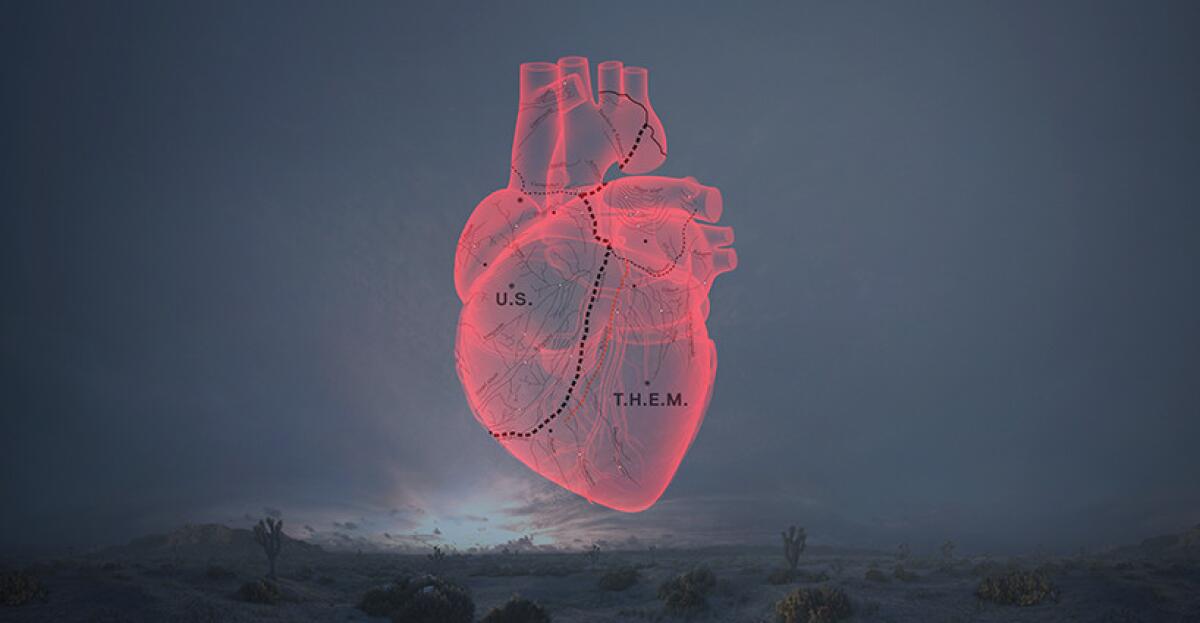
When I first entered “Carne y Arena,” I was worried that it might serve as a Disney-fication of this particular immigrant experience. It’s not a subtle work. From the director of “The Revenant” — a tale of death, near death, revenge and a very large bear — this should not come as a surprise.
But it’s an important one.
Since the presidential election, with its talk of border walls and deportations, Mexican and Central American immigrants have been vilified. Iñárritu takes the abstract issue of undocumented immigration and humanizes it by putting us there, by making us look into the eyes of those who survived their ordeals.
History is stories — some real, some exaggerated, others invented. The story of a difficult crossing is one of our foundational myths as a nation. “Carne y Arena” reminds us that it didn’t end with the Pilgrims.
LISTEN: Carolina A. Miranda talks about 'Carne y Arena' on KCRW's 'Press Play' »
Alejandro Iñárritu, “Carne y Arena”
When: Opens Sunday; no closing date set
Where: Los Angeles County Museum of Art, 5905 Wilshire Blvd., Mid-Wilshire, Los Angeles
Admission: Specially ticketed installation $30; tickets can be acquired via advance reservation online
Info: lacma.org
—————————
FOR THE RECORD
8:37 a.m. June 29: An earlier version of this article stated that Iñárritu directed the film “Gravity.” That movie was directed by Alfonso Cuarón.
2:30 p.m. July 1: An earlier version of this article stated that a piece of steel barricade in the installation evoked the U.S.-Mexico border barrier. It is an actual piece of the border wall.
—————————
Sign up for our weekly Essential Arts & Culture newsletter »
ALSO:
Can America's moviegoing habit be saved? The past, present and uncertain future of the multiplex
Cannes 2017: Alejandro Iñárritu's virtual reality project takes film to new frontiers—and questions
The architecture of moviegoing: Can the multiplex stay in the picture?
Argentine slums and a Unabomber cabin: How 'Home' at LACMA rethinks ideas about Latin American art
Mexico City's art scene is booming, but even with deep roots, political uncertainty keeps it fragile
The biggest entertainment stories
Get our big stories about Hollywood, film, television, music, arts, culture and more right in your inbox as soon as they publish.
You may occasionally receive promotional content from the Los Angeles Times.








